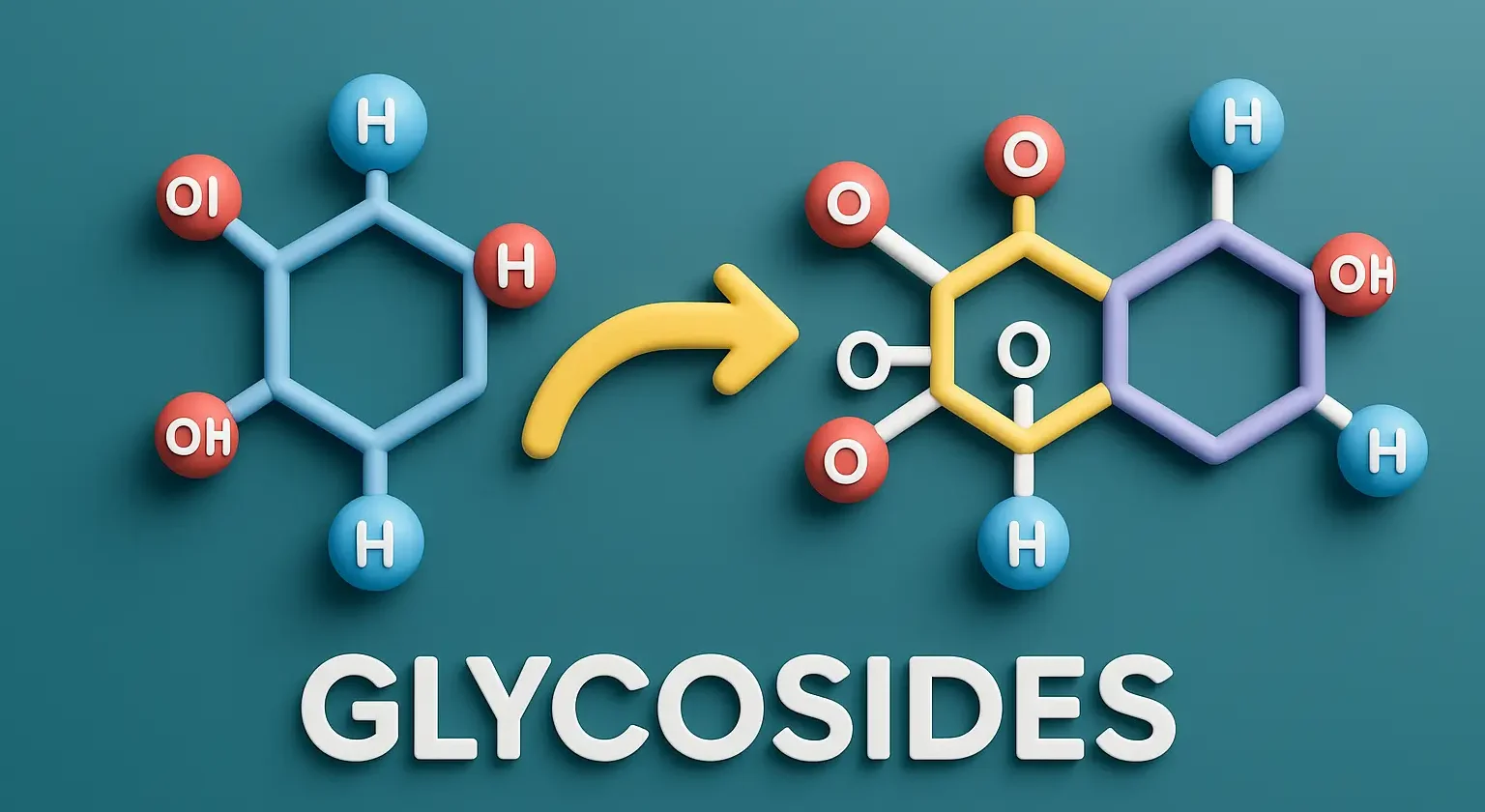Definition of Glycosides
- Glycosides are compounds consisting of a sugar moiety (glycone) linked to a non-sugar aglycone via a glycosidic bond. Aglycones can be terpenoids, phenols, or alkaloids.
Structure and Classification
- Based on aglycone:
- Flavonoid Glycosides: Flavonoid aglycone.
- Cardiac Glycoside: Steroid or triterpenoid aglycones.
- Saponins: Triterpenoid or steroid aglycones with soap-like properties.
- Cyanogenic Glycoside: Release hydrogen cyanide upon hydrolysis.
- Additionally classified by sugar type (e.g., glucose, rhamnose) and glycosidic bond type.
Biosynthesis
- Formed by glycosyltransferase enzymes attaching sugar moieties to aglycones, altering solubility, stability, and bioactivity.
Occurrence in Nature
- Common in plants for defense, pigmentation, and storage. Also found in some animals and microorganisms.
Biological Activities and Uses
- Pharmacological Effects: E.g., cardiac glycoside like digoxin for heart conditions.
- Defense Mechanisms: Toxins or deterrents against pests.
- Industrial Uses: Natural colorants and antioxidants in food and cosmetics.
Examples of Glycosides
- Rutin: Flavonoid glycoside with antioxidant properties in various fruits and vegetables.
- Glycyrrhetinic Acid: Saponin glycoside from licorice root, used in flavorings and as an anti-inflammatory agent.
Thank you for reading from Firsthope's notes, don't forget to check YouTube videos!

